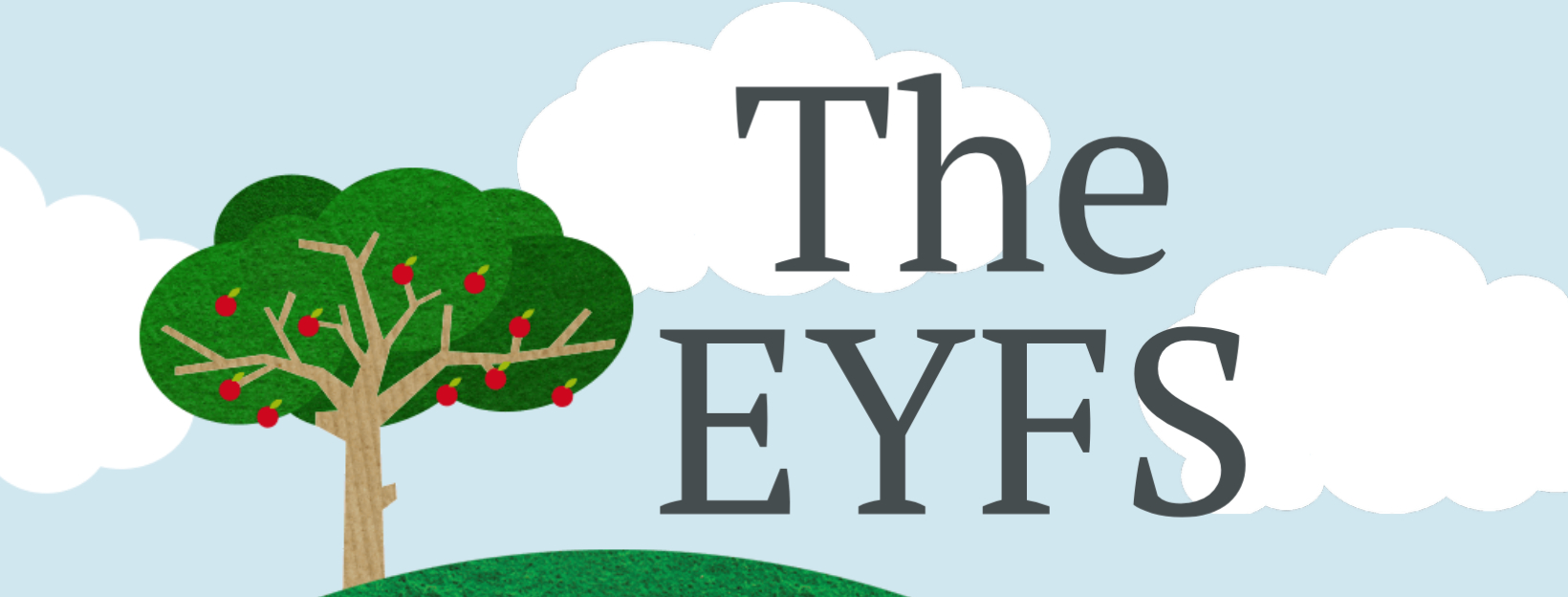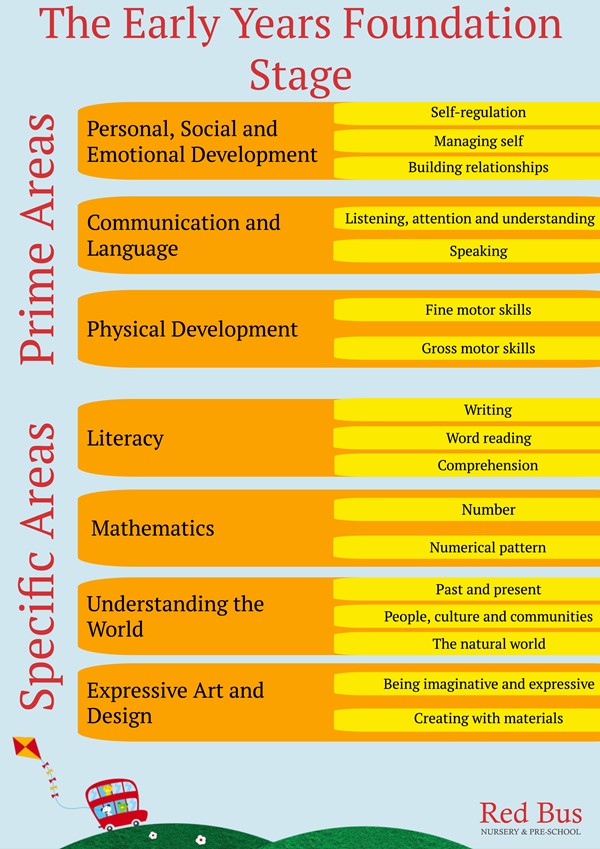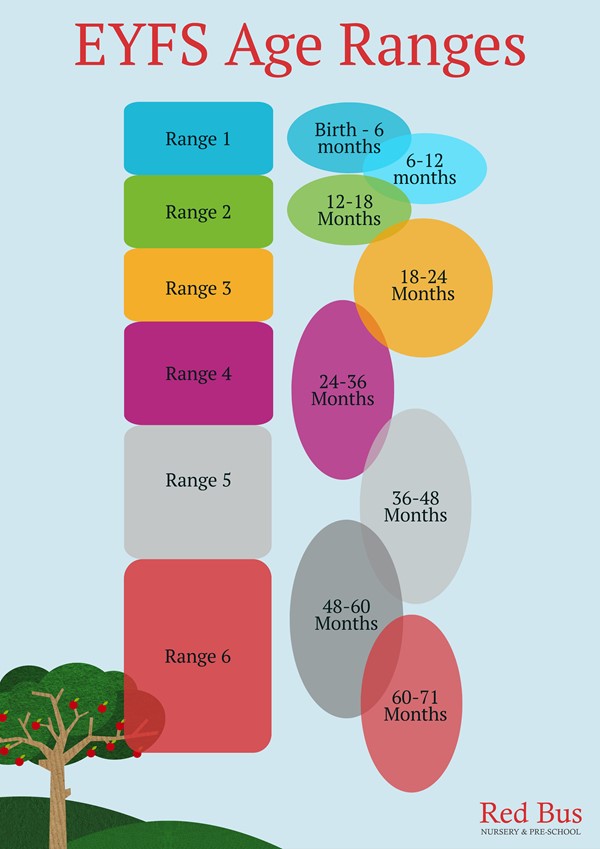
The EYFS sets out the learning and development stages for children from birth to five years. It includes -
• The seven areas of learning and development, which we use to guide your child’s play and the activities they take part in
• The legal welfare requirements that we must follow to keep your child safe
• Assessments that will tell you about your child’s progress through the EYFS
• Expected levels that your child should reach at age 5 - usually the end of the reception year. These are called ‘Early Learning Goals’
• Our statutory responsibility to ensure your child is supported in their development
Your child is already learning skills, acquiring knowledge and demonstrating their understanding in seven areas. These are split into three prime areas and four specific areas. Children mostly develop the three prime areas first, as they are the most essential for your child’s healthy development and future learning. As children grow, the prime areas will help them to develop skills in specific areas – but they are all important and interconnected. Here is each area of learning, with Early Learning Goals.

Birth to 5 Matters
Whilst the EYFS is a legal requirement, Birth to 5 Matters is a non-statutory document that supports our practitioners with their responsibilities within the EYFS. In Birth to 5 Matters, the typical progression in development has been grouped into broad ranges.
You will regularly see ‘Learning Story’ posts on ParentZone - these are observations from your child’s Key Person that will show what your child is doing, and how that is is linked to Birth to 5 Matters.
In these posts, practitioners identify the range that most closely describes your child’s learning and development - it will show the range that they feel is the best fit. You will often find your child is showing development in multiple areas of the EYFS through one activity!
We know that children develop at their own rate, and in their own way. Birth to 5 Matters is not a guide to where your child is going next, nor do we consider them in a particular chronological order. It is not a checklist for your child!
Whilst there are ages allocated to each range, it is just a rough guide - they overlap intentionally because there are no fixed boundaries.
We offer regular Parent Talks where you can discuss your child’s development with your Key Person, but if you ever have any concerns you can contact your setting directly.

There are four guiding principles in the EYFS that shape our practice:
• Every child is a unique child, who is constantly learning and can be resilient, capable, confident and self-assured
• Children learn to be strong and independent through positive relationships
• Importance of learning and development. Children develop and learn at different rates. The framework covers the education and care of all children in early years provision, including children with special educational needs and disabilities (SEND).
• Children learn and develop well in enabling environments with teaching and support from adults, who respond to their individual interests and needs and help them to build their learning over time. Children benefit from a strong partnership between practitioners and parents and/or carers.
You are your child’s primary care giver and first teacher - it is so important to us that you feel respected, valued and involved in your child’s learning. By working in partnership not only do our practitioners understand their key children better, but children feel more secure and confident in our environment and at home.
We hope that by sharing our knowledge, explaining how we support and observe your child and by keeping an open line of communication you too can feel confident in your part in your child’s learning.